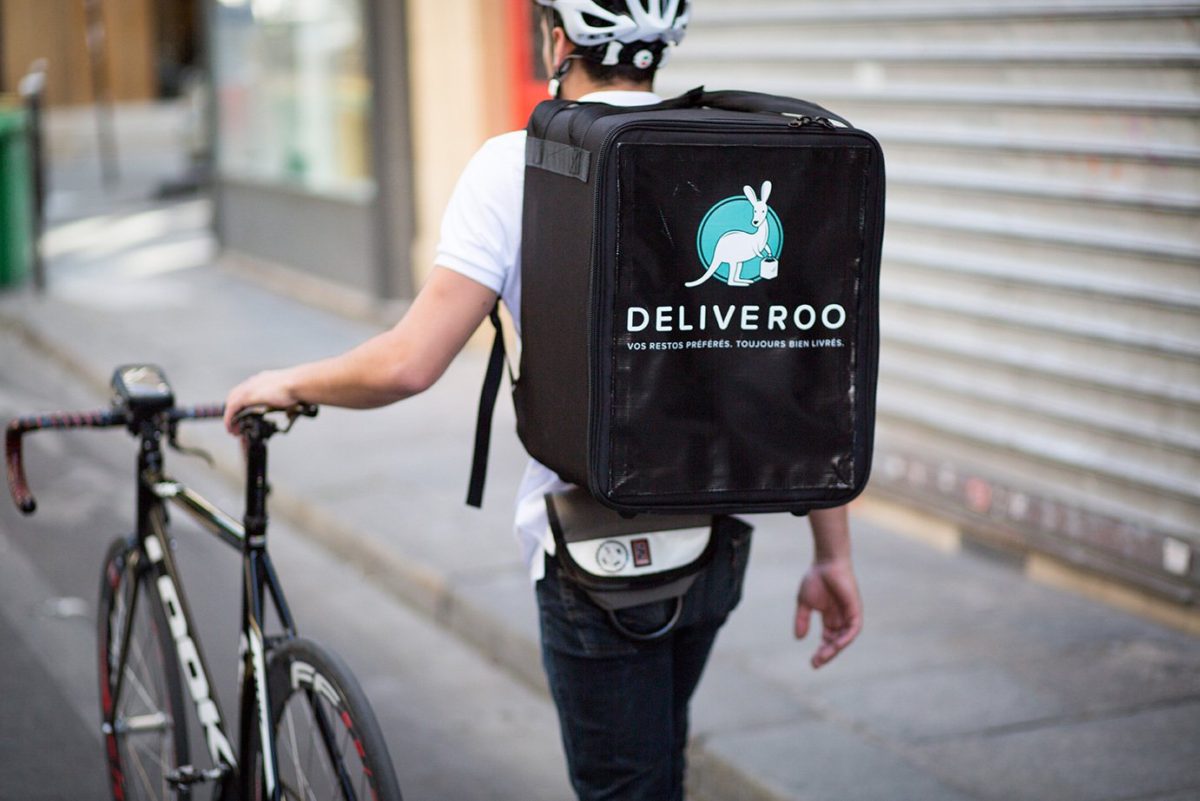The online market for food delivery is becoming increasingly competitive. While takeaway.com (in the Netherlands operating as thuisbezorgd.nl) has taken over Just eat in the Netherlands (1), newcomers Deliveroo and Foodora are trying to get foothold on the Dutch market as well.
Deliveroo and Foodora – both with a somewhat similar business model – are differentiating from traditional food delivery restaurants and online market leader takeaway.com by performing the delivery by bike and offering quality menu dishes from local restaurants, while Take Away offers mainly traditional delivery food such as pizza, sushi etc.
Since all dishes are delivered by bike, the range of restaurants that can deliver to your house is limited. This might limit the expansion of Deliveroo and Foodora to big cities. Moreover, since the dishes are being prepared by local restaurants with limited capacity, there is not much room for growth.
Two months ago, Deliveroo has received an additional investment of $275 million (2), of which a big part is going to its own kitchen network Roobox. Because of the limited capacity of local restaurants and the need for growth of Deliveroo, Deliveroo is setting up kitchens in cities where restaurants can cook food for delivery via Deliveroo.There are two problems with this business model.
Firstly, as part of Deliveroo’s offering, food is coming from the kitchens of local restaurants, prepared by their chefs. When food is produced in large kitchens owned by Deliveroo, by a chef that is working for the restaurant. However, this chef is not cooking in the restaurant and does not encounter guests of the restaurant. It is questionable if the quality standard and experience of getting food from a local restaurant remains intact.
Secondly, Deliveroo is moving away from a business model that is not dependent on ownership of the service provided, such as AirBnB that owns no real estate and Uber that owns no cars. Employing bike couriers was already a disruptive but at the same time traditional step. Owning kitchens will force Deliveroo to be in need of significant capital for further growth.
In conclusion, Deliveroo’s focus seems to be on short-term growth. Its strategy might limit Deliveroo to bigger cities and large investments might be needed for further growth.
https://fd.nl/ondernemen/1162246/thuisbezorgd-nl-koopt-just-eat
https://fd.nl/ondernemen/1162673/bezorgdienst-haalt-275-mln-op


Interesting topic you brought up. I would like to tackle the two problems you brought up in regard of Deliveroo’s business model.
1) Deliveroo is setting up kitchens in cities where restaurants can cook food for delivery via Deliveroo. You mention this forces Deliveroo to be in need of significant capital for further growth. While this is true, this could also become a key selling point of Deliveroo. These kitchens are able to produce restaurant quality food at a much lower cost, because no waiters/waitresses are needed.
2)It is questionable if the quality standard and experience of getting food from a local restaurant remains intact because the chef is not cooking in the restaurant and does not encounter guests of the restaurant. Nowadays , good reviews are key. Thus, when the quality of this “‘Deliveroo restaurant” is not there, customers will review it poorly, ultimately leading Deliveroo to hire a different chef, untill one is found that can work in these conditions.
All in all, I don’t believe the two problems you mentioned are problems at all.
Thanks for your blog post! It is indeed interesting to look at these companies and their business models, as the quick growth of Deliveroo (and Foodora) is very visible. The businesses are very new in the Netherlands, but already you see the bikes everywhere when looking around in the cities where they are active!
I agree with your thoughts about Deliveroo moving away from the business model and becoming dependent on ownership. I believe this takes away part of the flexibility of the business and indeed higher capital investment is needed. I do wonder whether the first problem that you bring up will actually be a problem for Deliveroo. In my opinion, most people who make use of Deliveroo want to save time by not having to prepare dinner themselves, but are not interested in ordering the often unhealthy meals offered by most food delivery services. Deliveroo offers them the opportunity to order food without having to compensate on the quality of the food. As Luca mentioned, the company can make use of reviews, which will also encourage the chefs to keep the quality of the food high. If people were looking for the experience of getting food from a local restaurant, I believe they would rather have dinner at the restaurant instead of ordering the food. When being able to offer the same kind of meals from a kitchen owned by Deliveroo, I do not think the customers will even notice the difference.
It will be interesting to see whether Deliveroo is able to successfully expand their business, taking into account the limits to the size of the restaurants that they are working with.